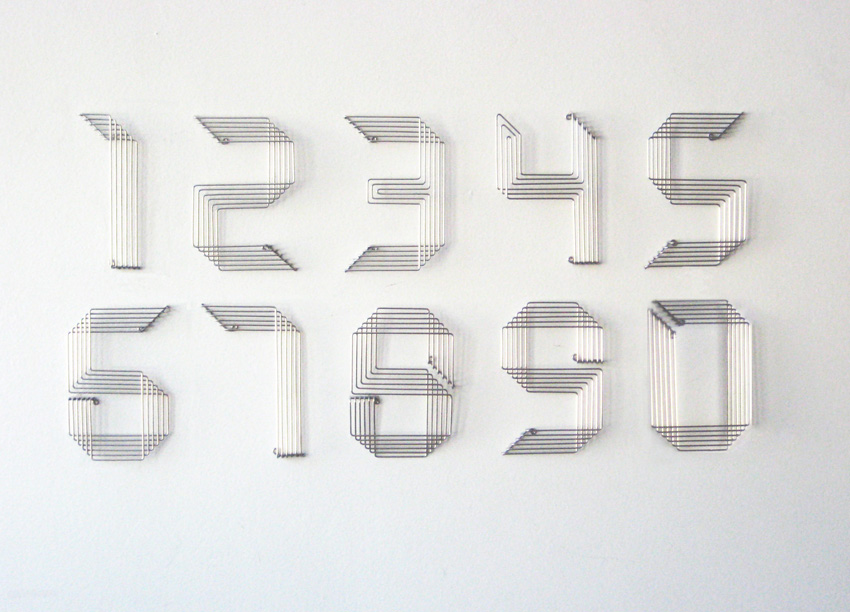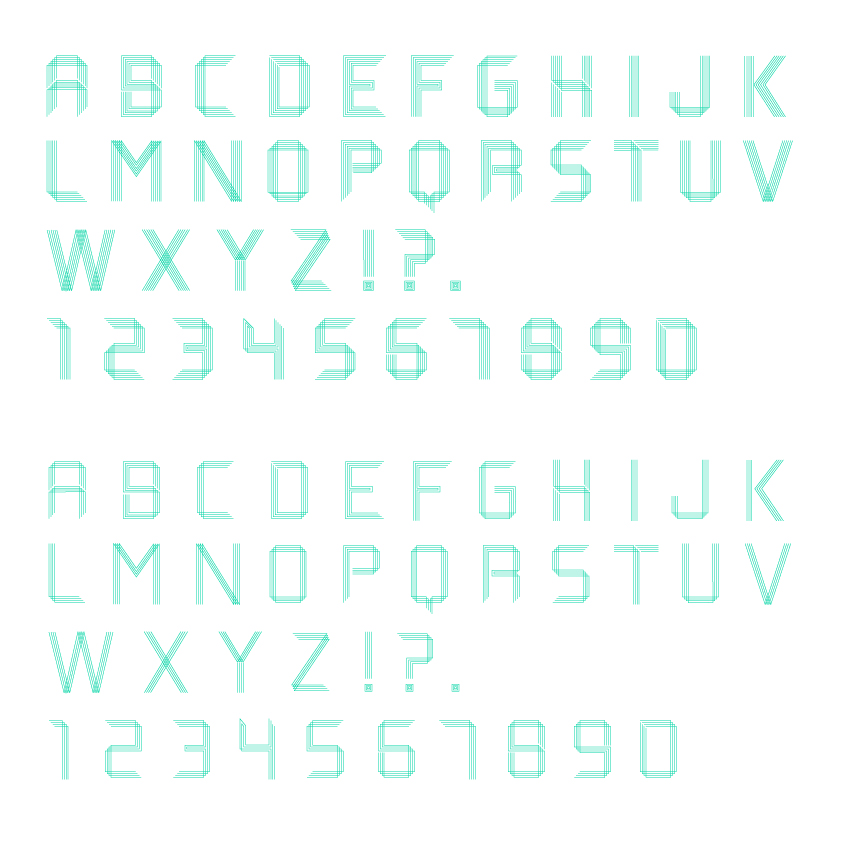Tisha Boonyawatana grew up in an artistic family and was inspired by her parents and older sister. Creating not only aesthetically-pleasing, but functional pieces really appealed to her. She loves taking on a good challenge and experimenting with the non-traditional. Her design project, called “Line Six,” that she designed in her graphic design class at Cal State University Long Beach proves just that.
What were the parameters given for the project?
The objective was simple: make house numbers out of anything except what has already been made. The idea was to find an uncommon application for materials that would force them into a new dimensional form.
What were your typographic influences?
The project began with discovery through experimentation. We were encouraged to work outside traditional mediums and try out any unfamiliar tools we could find. I was originally inspired by strings on a guitar, evenly spaced and pegged down in a diagonal arrangement. After many trials fiddling with actual steel strings and pegs, I strayed away from the original materials and stripped it down to its core structure. The goal wasn't to choose a material and mimic a typeface, but to find and bring forth a new typeface within the natural forms of the object while working within its limitations and boundaries.
How did you go about selecting the materials?
At first, working with pegs and strings had really over complicated the structure and felt too literal. I looked for ways to simplify and move away from what was expected, while keeping in mind aesthetics and overall stability. Initial prototypes were tested with steel wires, brass rods, aluminum tubing, and finally stainless steel, which proved to be the most stable.
Why house numbers?
Our instructor, Andrew Byrom, is known to play with three-dimensional typography, and it was his way of getting us off the computer and pushing us to think beyond the limits of print and digital type. The name Line Six refers to six strands that create the weight of the typeface. A lighter version was also created with four strands specially named Line Four.
Very beautiful. How was it working with the material? How did you construct the numbers?
My first complete prototype was handmade using aluminum tubing and glue. The final set I had outsourced a model shop vendor to fabricate the steel numbers.
Project Credits: Andrew Byrom / Line Six was featured in Creative Quarterly and Typodarium Kalendar 2010.
Thanks! You can see more of Tisha's work at www.tishaboonyawatana.com.















